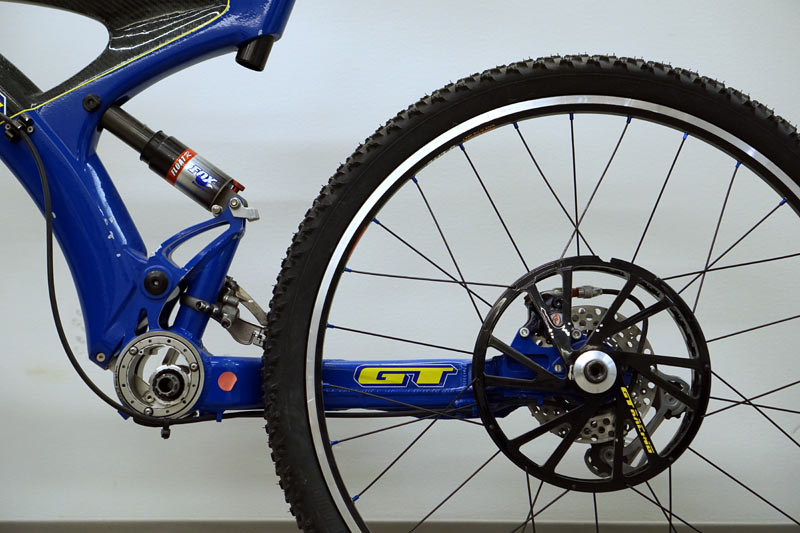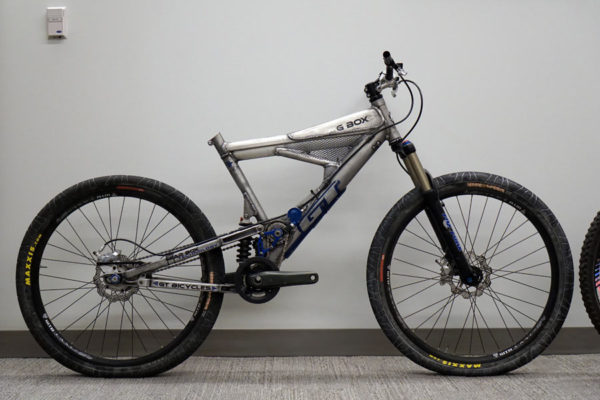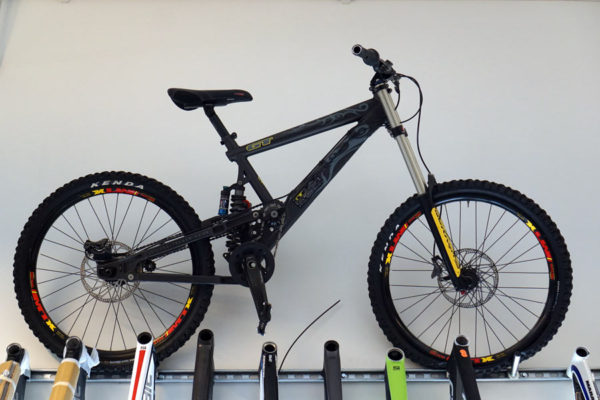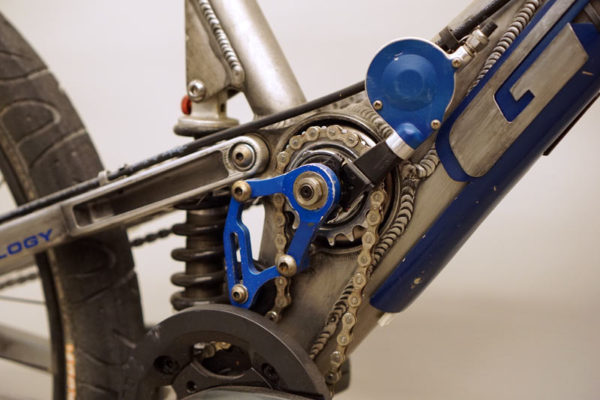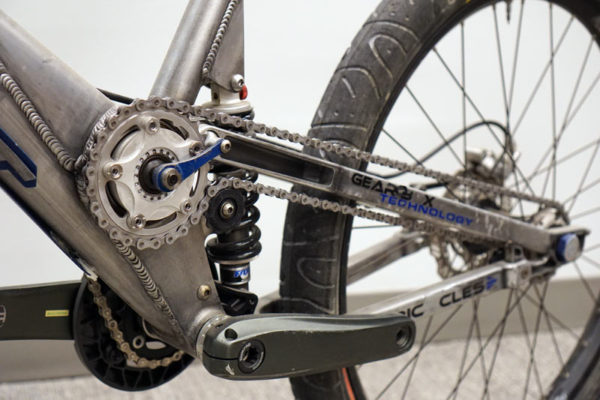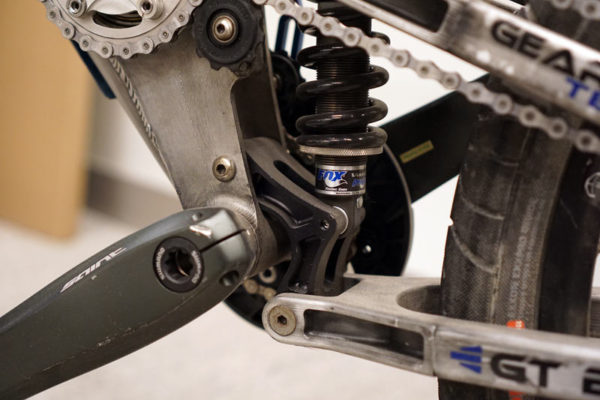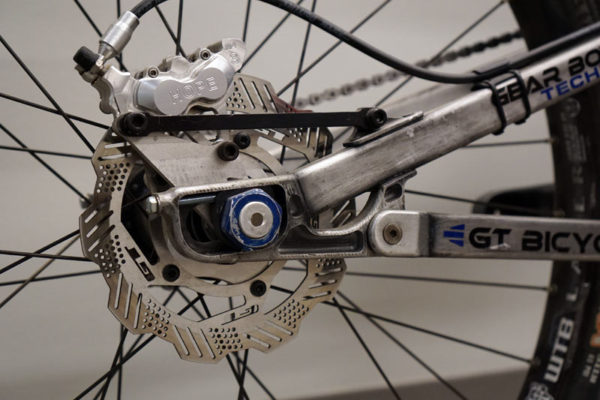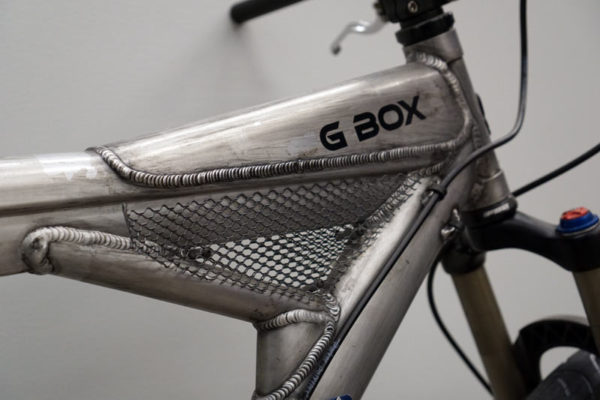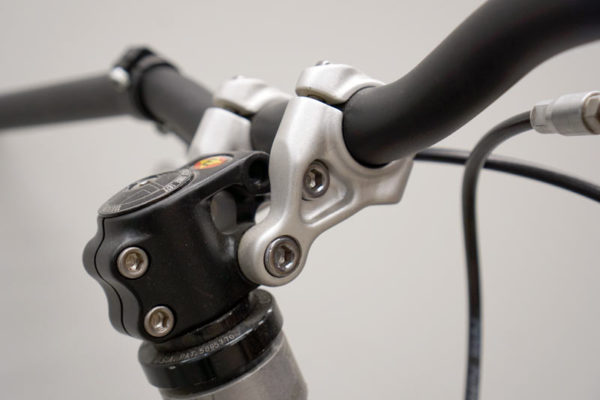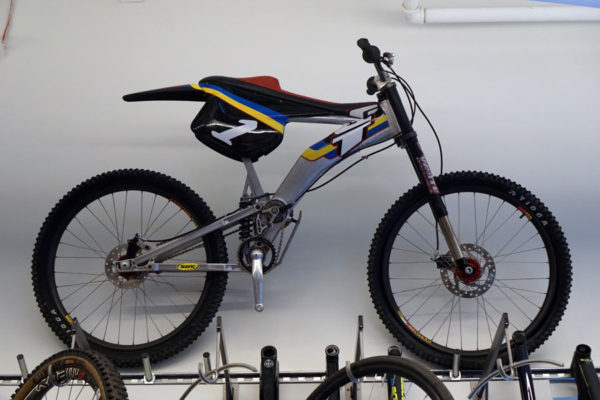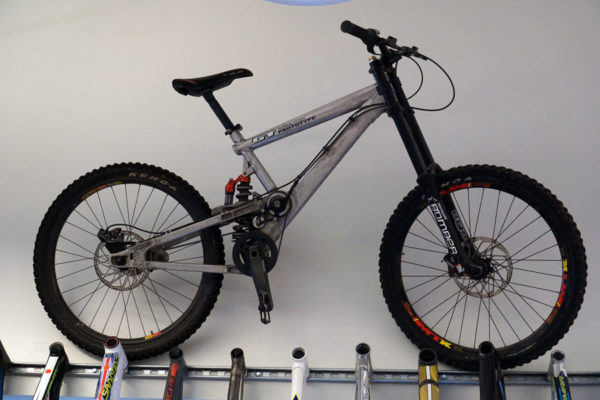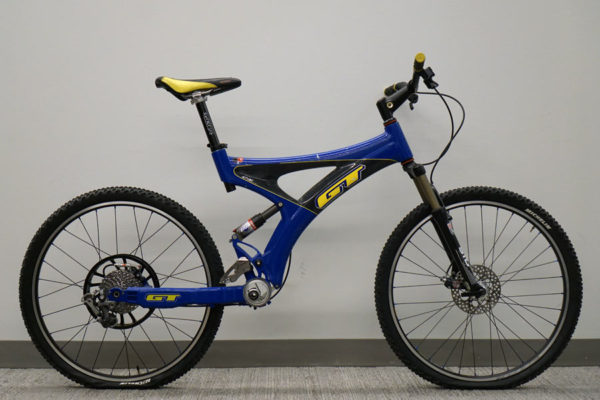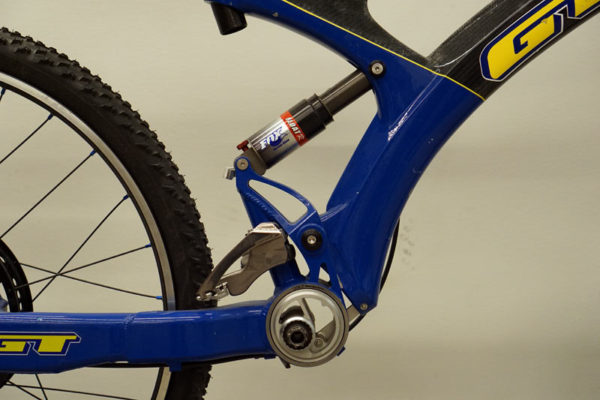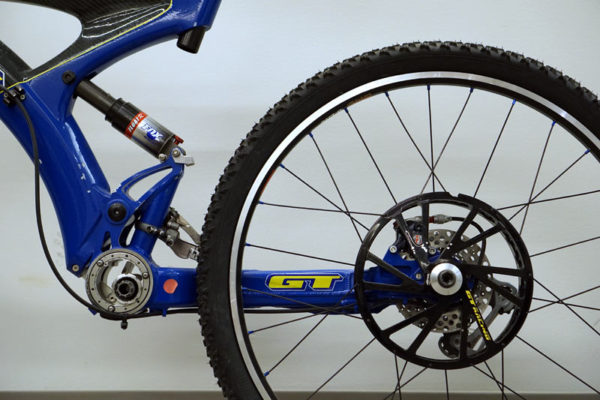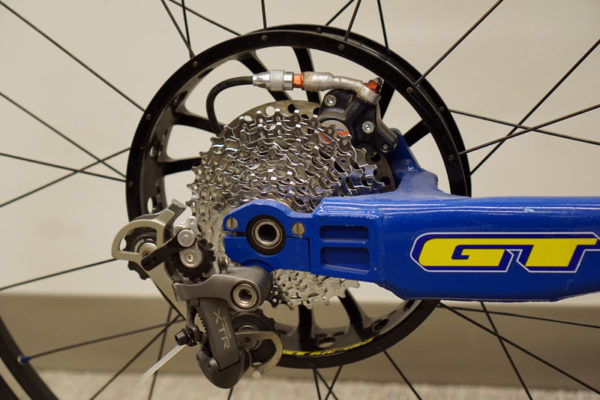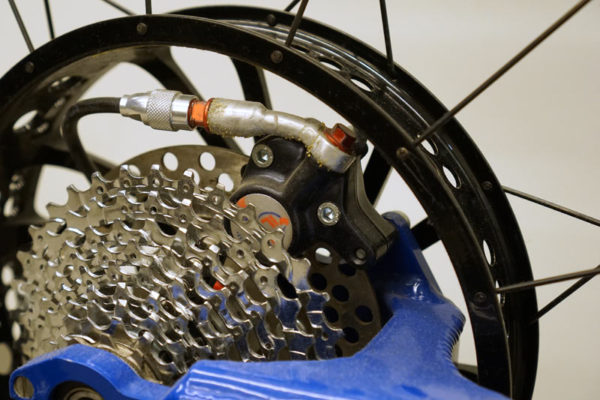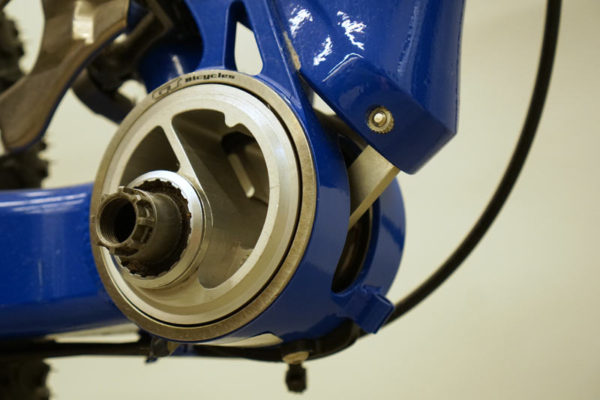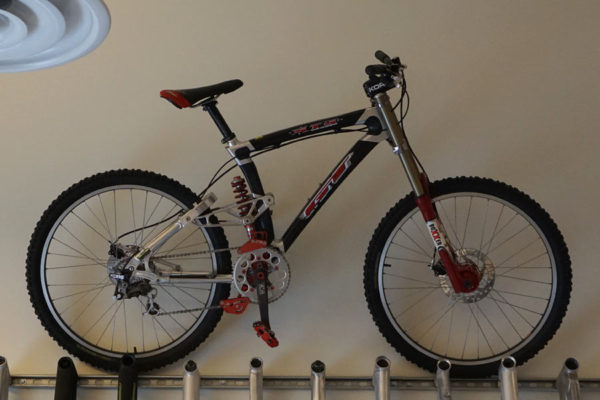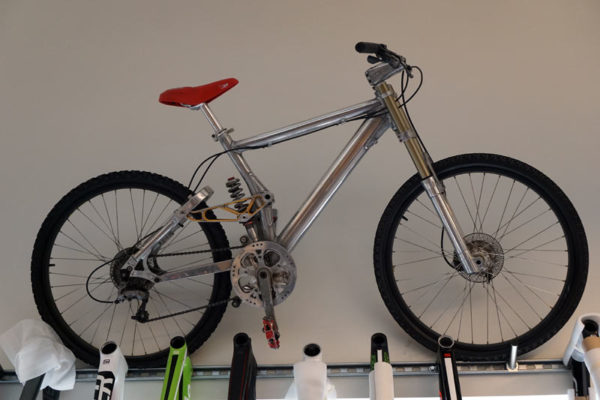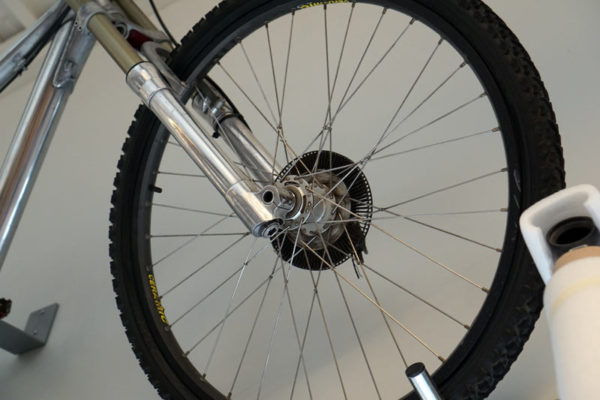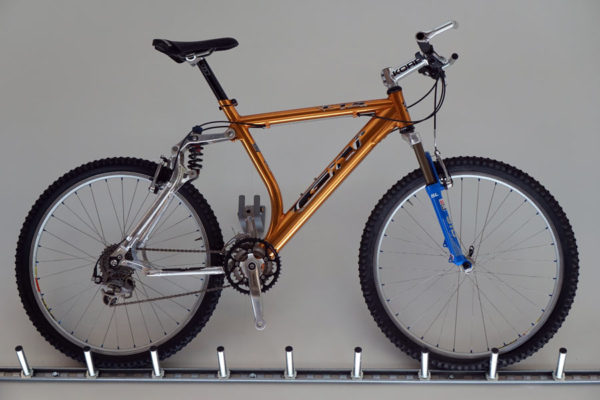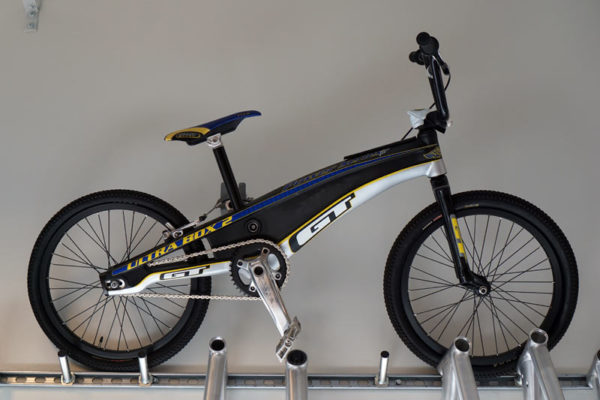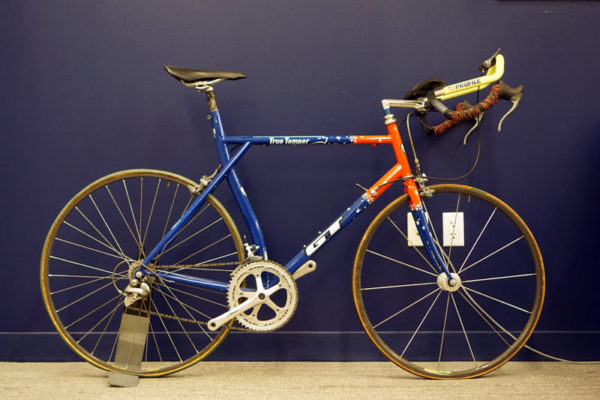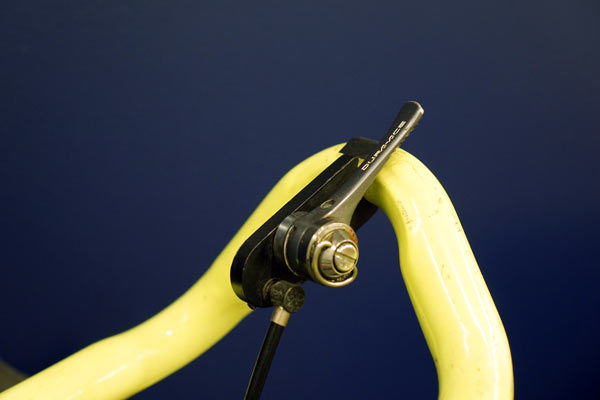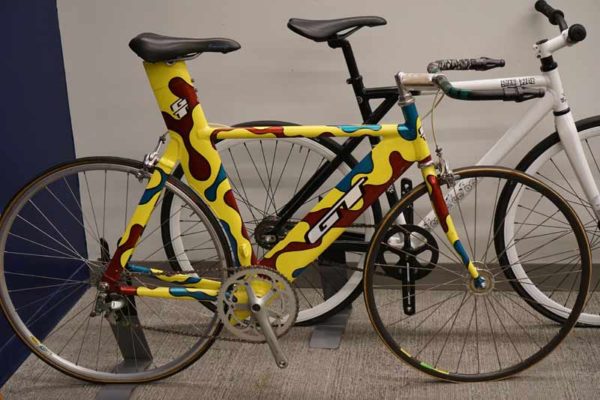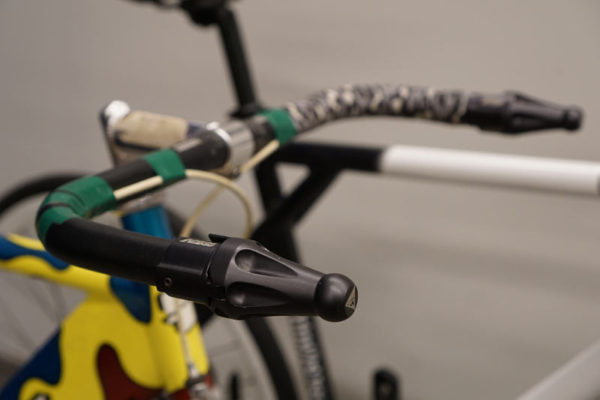If you thought the prototype and team Cannondale mountain bikes from our HQ tour were wild, wait until you see these GT full suspension concepts. Above is a working concept bike developed by the product and engineering teams for an Interbike show. This early concept led to the iT-1 bike from 2006…
This is a production sample of the 2006 GT iT-1 downhill bike. Word around the Interwebs is they only made about 200 of these for retail. But wait, let’s back up and check out some details:
The shifts are made internally, using a 7-speed planetary hub-style gear box inside the frame between the two upper gears. A single chainring drives a chain up to a second ring on the right side, which is geared before turned the ring on the left side, when then drives the chain leading back to rear hub. This reduces unsprung weight at the rear axle, which generally leads to more sensitive suspension. Check out this video to see it in action.
Click to enlarge the images and you’ll see the cable running into upper axle/gear cluster to actuate the shifts. You’ll also see a lot of superfluous decoration on the frame, which gives it a very Mad Max look.
This wasn’t i-Drive because the crank’s spindle didn’t float on the lower linkage. Since the upper pivot doesn’t use a linkage, the lower pivot has to extend backward, which means there’s chain growth, so a chain tensioner with pulley wheel keeps it tight, same as the derailleur’s cage would in a normal setup.
The drivetrain design means the brake has to be on the right side. Note the sliding dropout to adjust wheelbase, and possible chain tension, too.
And this adjustable stem. Wouldn’t wanna go downhilling with this!
To spread the word about the design and get some attention, they made this original concept back in 1997. Check out this story from Dirt for some history.
By 2004/2005, this is what it looked like…still a prototype. All that work, and very little production action to show for it, but keep in mind these were the glory years of big budget mountain bike racing and pie in the sky thinking, all of which led to the extremely dialed mountain bikes we enjoy today.
Some of that thinking also led to the i-Drive suspension that GT did use to good effect for many years (and continues to refine, though the name has changed).
This blue one was a concept bike made for Interbike tradeshow (c. 1999) out of GT’s former HQ in Santa Ana, CA. It was an XC version of the iDrive full suspension system with a single-sided swingarm, proprietary rear hub/wheel system, and center mounted rear disc brake. The concept was really ahead of its time visually and conceptually, but never went to production.
The single-sided swingarm isn’t even the craziest part of this bike, it’s the way they integrated the rear disc brake into the hub:
That’s a tiny little rotor, from the looks of it not even 140mm.
For the unfamiliar, the I-drive system used a dog bone link anchored at the base of the downtube to pull on and rotate the bottom bracket assembly inside the outer shell. That allowed them to use a simple single-pivot suspension design and put the pivot higher up, but still keep the crank’s spindle from falling too far backward.
This one’s carbon frame looked like a more traditional use of the material, particularly in comparison to the thermoplastic STS and LTS frames…
This STS DH mountain bike used carbon/thermoplastic tubes molded inside aluminum lugs. Suspension designs at the back varied depending on travel, with this longer travel model used a pull shock design, except that the part “pulling” the coil spring into compression was situated such that it was really pushing it.
Same for this prototype, except it was to prove the design before the cost of composites were added to the equation.
Drum brake for a DH bike, anyone?
The shorter travel LTS XC bike used a trunnion mount design to sandwich the shock between pivots on the seatstays.
It wasn’t all mountain bikes on the GT side. They have a big heritage in BMX, and this carbon fiber Ultra Box 2 bike was probably crazy stiff.
This track frame used a smaller front wheel, with the rear shifter on the aero extensions and the front shifter still on the downtube.
This one’s paint job almost made it too hard to look at anything else, but check out these brake levers:
Maybe it was the aging cables creating a ton of drag, but my hunch is it’s just the very, very bad design. To pull the brakes, you had to pull the tip outward (or in which ever direction you had it twisted when mounting), which meant you could very easily put a lot of unintentional input into the steering…and lose control if you weren’t on top of it.
Thanks a ton to the crew at CSG for showing us around and providing some background on their bikes!
